Watercolor Fanatic
Watercolor tips for capturing harbor and boats.
Whether you are a seasoned watercolorist or a beginner , this lesson will provide you with valuable tips and techniques to bring your harbor and boat paintings to life. Spoiler alert, I’m a fan of work boats, not yachts. Maybe it’s the middle class upbringing and lack of zeros in my savings account. But hear me out, you can apply these watercolor landscape painting ideas to all types of floating vessels.

Let’s crack into some tips for painting boats and harbors with watercolors
Watercolor is an ideal medium to use for painting maritime scenes. We will kick things off with a video demo where I paint a loose, expressive harbor scene that I hope will inspire your next masterpiece. So, grab your brushes and let’s set sail on a nautical painting adventure!
Study and Observe
Before diving into your painting, take some time to observe the harbor and boats you wish to capture. Visit the location, if possible, and immerse yourself in the atmosphere. Observe the play of light on the water, the reflections, the colors of the boats, and the overall composition. Take photographs or make sketches to reference later. Understanding the subject matter will enable you to add authenticity and depth to your paintings.
Presented below is the inspiration image for my painting, brimming with an insane amount of details that possess the potential to overwhelm the composition. Remember, it is crucial to initially focus on the prominent shapes and assess their compatibility with the overall design.
Should the design and composition fail to harmonize, the entire artwork may suffer as a result. So, spend time learning how to use good design techniques and avoid common mistakes such as symmetry, tangents and cropping errors.

Start with a Plan
Before applying the first brushstroke, create a rough sketch or thumbnail of your composition. This will help you establish the overall layout and balance of your painting. Consider the placement of the horizon line, boats, and any architectural elements, such as piers or lighthouses. Keep in mind the rule of thirds or other compositional techniques to create a visually pleasing arrangement.
Colors and Palettes
Harbors and boats offer a vibrant color palette that can be both challenging and exciting to work with. Choose a limited range of colors to maintain harmony and balance in your painting. Blues, greens, ochres, and warm grays are commonly found in harbor scenes. Experiment with different color combinations to create depth and capture the unique atmosphere of the location. Remember that watercolor paints tend to dry lighter than they appear when wet, so test your colors on a scrap paper before applying them to your artwork.
Here’s a great article for learning how to mix watercolors like a pro !

Mastering Water and Reflections
Water is a crucial element in harbor scenes, and capturing its translucency and reflections is essential. Begin by wetting the area where the water will be painted, then introduce colors in a loose and fluid manner. Use horizontal brushstrokes to mimic the movement of water. To create reflections, simply mirror the shapes and colors of boats or buildings, with a slight softening effect. Remember that reflections are often darker and less detailed than the objects being reflected.
Boats: Focus on the Big Shape
Boats are the heart of any harbor scene, and paying attention to their shapes will elevate your painting. Start by sketching the basic shape of each boat, focusing on proportions and perspective. Try looking at the contour before adding details.
Add small details like masts, ropes, and windows to create interest. Use different brush sizes and techniques to achieve texture and depth. Be patient and take your time, as capturing the intricate details of boats can be challenging but rewarding.

Play with Light and Shadow
Light and shadow add drama and dimension to any painting. In harbor scenes, the interplay of light and shadow can be particularly captivating. Observe the direction of light and its effect on the boats and surrounding structures. Use light washes for the sunlit areas and darker washes for the shadows. Enhance the contrast to create a sense of depth and three-dimensionality.
Add People and Activity
Including figures and activity in your harbor painting can bring it to life. Paint tiny figures on boats or along the harbor, capturing the sense of movement and the scale of the scene. Suggest activity through small details like flags, seagulls, or waves. These elements not only enhance the narrative of your painting but also add a sense of scale and proportion.
Suggested Material Checklist
Materials can make or break the outcome of a watercolor study. Watch the video that covers the best watercolor materials if you need more specifics about color choices, brush sizes and such. Basically, it’s exactly what I use and recommend for all levels.
Watercolor Paints : Opt for artist-grade watercolor paints in a range of colors. Choose a basic palette that includes six primary colors (one cool and warm hue for each one including red, blue, and yellow) along with earth tones for a versatile collection.
If you aren’t aware of the six primary palette , then check out our in-depth article on how to mix watercolors for beginners . It has the exact hues I use for every painting. And, if I make changes, I always update the article so you know the exact hues that get the best results.
Brushes : Invest in a set of good-quality watercolor brushes with different shapes and sizes. Round brushes are excellent for detailed work, while flat brushes are great for larger washes. I’d recommend one medium and one large pointed round. Then get a large mop brush that will handle those initial washed that are applied in the very beginning.
You only need three brushes to do most of the heavy lifting! However, I do recommend having a dagger and possibly and Motler on hand as well. Check out the article I wrote on how to choose the best watercolor brushes if you have questions on the exact brands, sizes and such.
Paper : I highly recommend selecting watercolor paper specifically designed for this medium. Look for papers labeled “cold-pressed” or “hot-pressed” to suit your preferred texture. Experiment with different weights and brands to find the one that suits your style. Most beginners choose 140 lb. cold press to start their journey. Hot press tends to be a little slick and most used for highly detailed work and portraits.
Avoid cheap, wood pulp papers as they don’t react properly to washes and other techniques . These cheaper papers tend to break down quickly and don’t age well either, basically yellowing over time. Be sure to read the how to choose the best watercolor paper article when you have time.
Palette : A palette is essential for mixing and diluting your watercolors. Choose a palette with wells to hold different colors and a large mixing area. Small palettes tend to get dirty too quick and I found it difficult to have enough free space to mix enough colors without having to stop everything to clean up. The Masterson Pro palette works great and available at Amazon and Blick Art.
Water Containers : Have at least two containers for water—one for rinsing your brushes and another for clean water. Make sure the containers aren’t too small, and I would r ecommend plastic over glass. I’ve had plenty of studio accidents and cleaning up shattered glass isn’t ideal when in a creative mode.
Masking Tape and Drawing Board : Masking tape helps secure your paper to a drawing board, keeping it flat and preventing it from warping. The tape is optional and depends if you prefer the clean edges. In the beginning you will most likely focus on sketches and studies, so maybe pass until you determine later on if you need it.
A smooth, firm board is a must! I recommend Gator foam board as it’s very sturdy, smooth and durable. Fairly inexpensive and light weight to boot. That covers materials, let’s move on to skills you need to start watercolor painting.
Watercolor is a versatile medium that allows artists to capture the vibrant beauty of harbors and boats with its fluidity and transparency. By studying and observing your subject, planning your composition, selecting a harmonious color palette, mastering water and reflections, focusing on boat details, playing with light and shadow, and adding people and activity, you can create captivating harbor and boat paintings.
Remember, practice makes perfect. Embrace the process of learning and experimenting with different techniques. Each painting you create will bring you closer to mastering the art of capturing the essence of harbors and boats in watercolor.
Additionally, don’t be afraid to add your personal touch and style to your paintings. Whether you prefer a realistic approach or a more loose and impressionistic style, infusing your work with your unique artistic voice will make it truly special.
Lastly, enjoy the journey. Painting harbors and boats allows you to explore the serenity of the sea, the charm of coastal towns, and the fascinating world of maritime activities. Let the process of creating art take you on a nautical adventure, filled with creativity, inspiration, and a deep appreciation for the beauty of harbors and boats.
So, set sail with your watercolor palette, immerse yourself in the beauty of the sea, and let your brushes dance on the paper as you create stunning harbor and boat paintings that capture the essence of these maritime scenes. Happy painting!

Edgar Payne’s Sailboat Paintings
Most people know Edgar Payne for his vast and mountainous landscapes, but it seems he was also keen on painting sailboats. Below is a collection of his sailboat paintings, plus some key observations:
- Notice the strong use of shape. This is typical of Payne’s work. He had a knack for transforming complex subjects into basic shapes.
- The subject, sailboats docked at harbor, is filled with interesting shapes and patterns. This plays well into Payne’s style and is perhaps why he created so many of these paintings.
- In many cases, the sailboats extend or just meet the top edge of the painting. This goes against standard composition theory, but it works. Another example of why you shouldn’t follow painting theory like rule-bound law. (If you want to deepen your understanding of composition, you might be interested in my Composition Breakdown course.)
- Painting the same subject over and over again allows you to gain a deeper understanding of it. The constant subject also allows you to explore changes in color and light. Claude Monet also did this with his series on water lilies , the Rouen Cathedral , and the Waterloo bridge , among others.
- A distinct style is hard to develop but incredibly powerful. I can easily spot Payne’s work from the crowd.
A note on developing your style: It’s hard to force a style, let alone a popular one. First, focus on painting well. Your style will develop naturally over time based on your unique choices and actions. I can’t imagine Edgar Payne or Vincent van Gogh were too fussed about style; I like to believe that’s just how they enjoyed to paint.

Want to Learn More?
You might be interested in my Painting Academy course. I’ll walk you through the time-tested fundamentals of painting. It’s perfect for absolute beginner to intermediate painters.
Thanks for Reading!
I appreciate you taking the time to read this post and I hope you found it helpful. Feel free to share it with friends.
Happy painting!

Draw Paint Academy
About | Supply List | Featured Posts | Products
Dan Scott is the founder of Draw Paint Academy. He's a self-taught artist from Australia with a particular interest in landscape painting. Draw Paint Academy is run by Dan and his wife, Chontele, with the aim of helping you get the most out of the art life. You can read more on the About page .

Exploring Vincent van Gogh’s Techniques and Processes
January 25, 2024
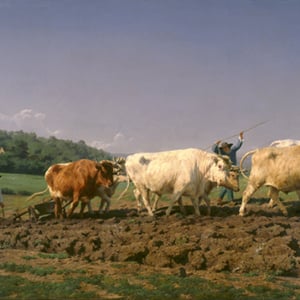
A Closer Look at Ploughing in the Nivernais by Rosa Bonheur
February 1, 2023
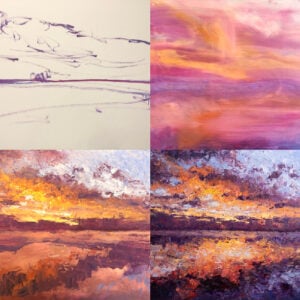
Determining the Right Strategy for Your Next Painting
May 26, 2023
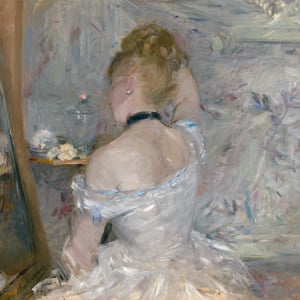
A Closer Look at Woman at Her Toilette by Berthe Morisot
August 5, 2022
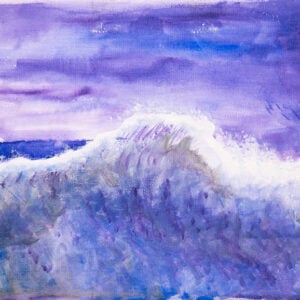
Throwback to My Childhood Paintings
October 11, 2021

How to Paint Like Pierre-Auguste Renoir
April 14, 2022
Boats In Harbor
PREMIUM VIDEO
Subscribe Now To Unlock This Training And Dozens Of Others

Related Courses
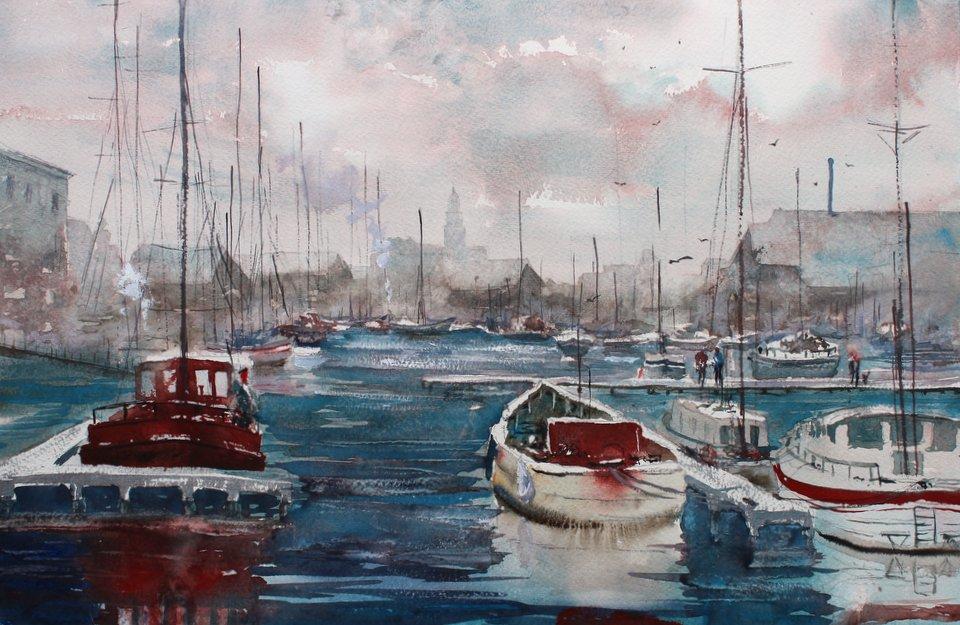
October 7th, 2014
Watercolor Class Preview: How to paint an overcast sky. How to paint water. When to let paint dry before continuing. How to paint buildings. How to separate foreground from background. Why you want to keep backgrounds simple. How to paint mist. How to paint boats. Why you want to plan your steps before starting. How to paint reflections in the water. How to create depth and dimension painting details. Reference Photo Final Painting What does yours look like? Send it to us via a message on our Facebook page so we can...
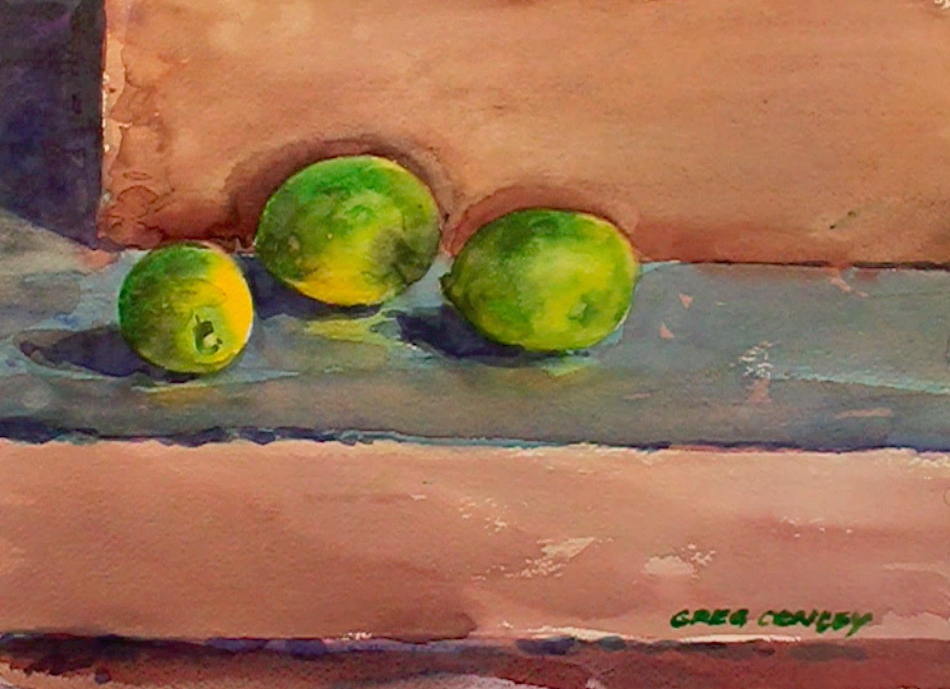
October 8th, 2014
Watercolor Class Preview: How to paint close-up limes How to paint highlights and shadows How to paint reflections How to layer glazes How to add texture
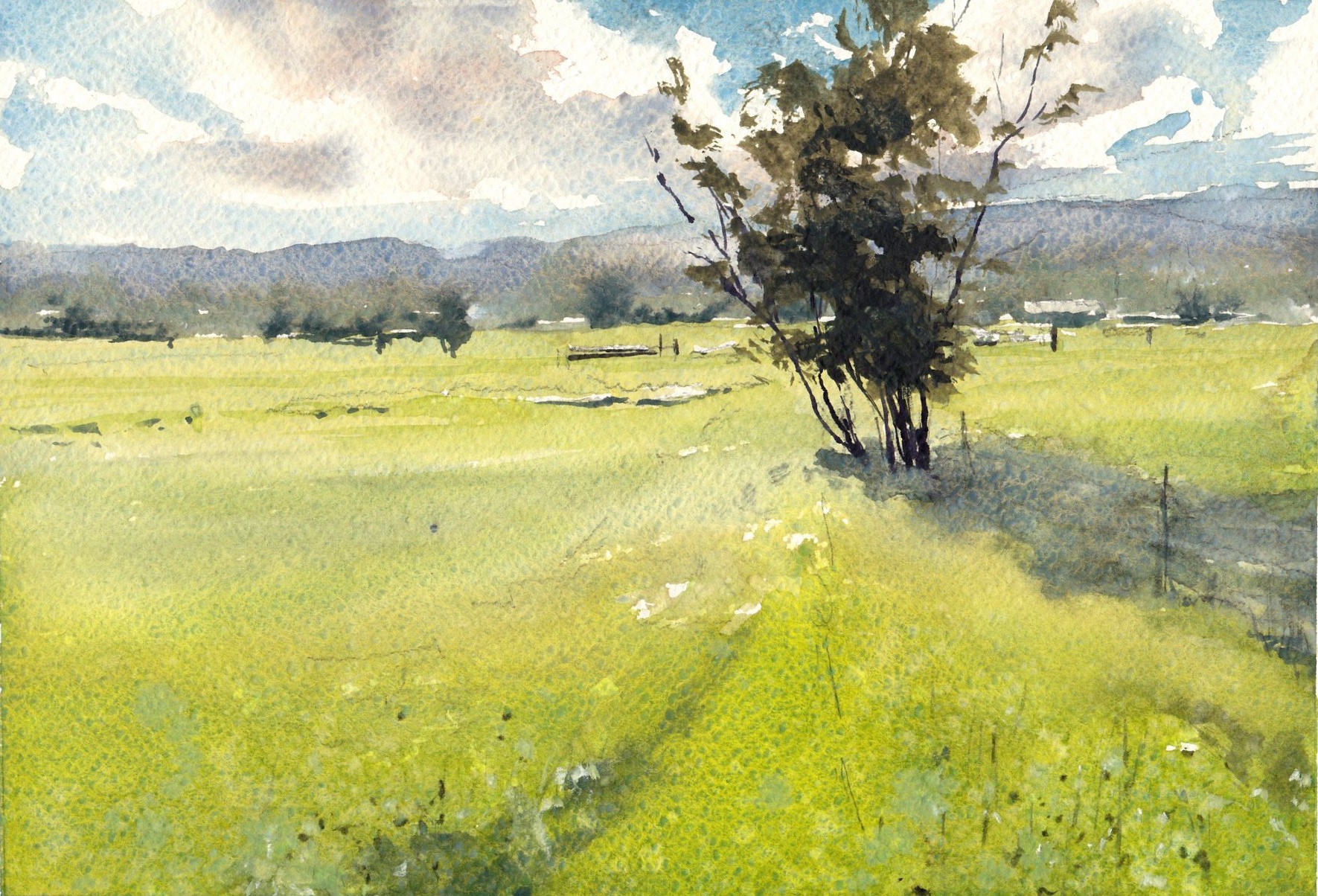
October 9th, 2014
Watercolor Class Preview: How to prepare color schemes for plein air paintings. Why you want to scribble an initial thumbnail sketch. How to pick the right size of watercolor paper for plein air. Why temperature and wind should influence your planning. How to paint fields. How to paint trees. How to paint shadows. How to paint clouds. How to paint blue skies. When to let paint dry before continuing. How to paint mountains. Reference Photo Initial Sketch Final Painting What does yours look like? Send it to us via a...


How To Paint Boats In Watercolor
Miscellaneous, how to paint boats in watercolor: simple rowing boat, step 1: initial sketch, step 2: painting the first wash, step 3: painting the background, step 4: painting the boats, step 5: foreground boat & cast shadows, step 7: adding foreground texture, step 8: foreground foliage, step 9: final details, watch the video, materials list.
Ultramarine Blue: Winsor & Newton | Daniel Smith Dioxazine Purple: Winsor & Newton | Daniel Smith New Gamboge: Winsor & Newton | Daniel Smith Burnt Umber : Winsor & Newton | Daniel Smith Paynes Gray: Winsor & Newton | Daniel Smith Alizarin Crimson: Winsor & Newton | Daniel Smith Cadmium Red: Winsor & Newton | Daniel Smith
Rigger Brush (For thin tree branches etc) Bu y from Amazon 1″ Hake Brush Buy from Amazon Synthetic Squirrel Flat Brush Buy From Amazon Princeton Synthetic Kolinsky Mop Brush Buy from Amazon
Arches watercolor paper block, cold press, 9″ x 12″, 140 pound Buy from Amazon
Easy release painters masking tape Buy from Amazon Adjustable desktop easel Buy From Amazon

This simple rowing boat can be painted with just one brush. A 1/4″ flat brush.
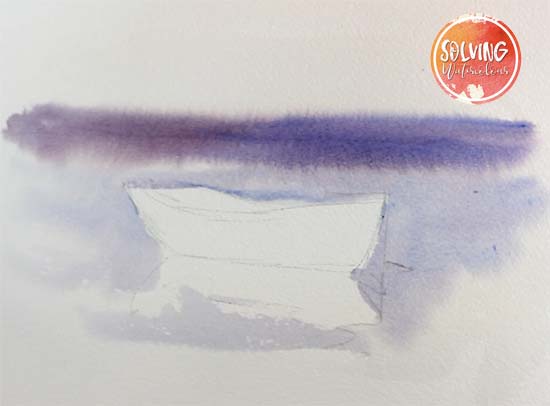
Begin by painting a loose background wet into wet using Ultramarine and Dioxazine Purple. Leave the paper dry where the boat will be as the paint can only flow only where the paper is wet.
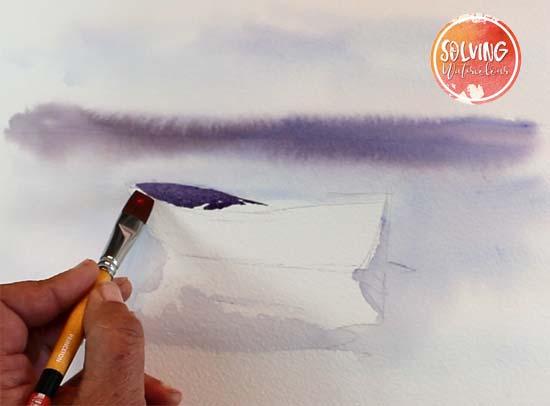
With the edge of your flat brush, paint the darker interior of the boat with a flat wash of Dioxazine Purple and Payne’s Grey.
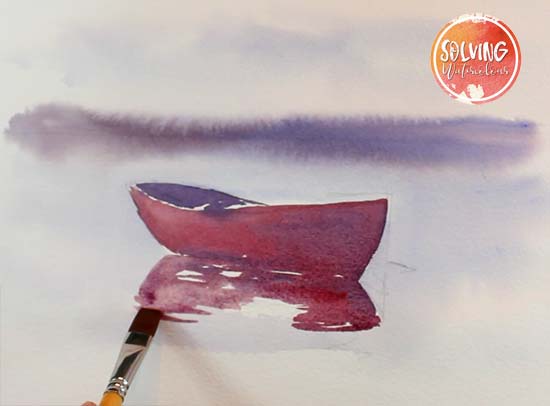
Paint the exterior of the boat with Cadmium Red. Thin your paint mixture with water as you progress down to the boat’s reflection in the water. The reflection should be lighter and have a less saturated color than the boat itself.
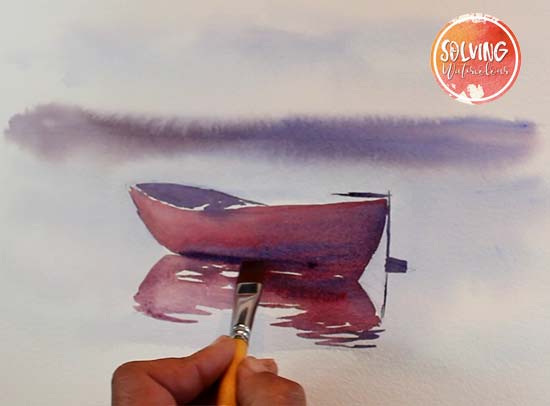
While the paint was still wet I dropped in some shadows along the rear and particularly around the bottom of the boat.
Here’s a pro tip for painting shadows. Never use gray, or black to darken your colors as this just makes them dull and lifeless. In this instance I’ve added Ultramarine to my Cadmium Red. This darkens the color, as well as cooling it, making for a much more convincing shadow color. For more on this this see my detailed post on color theory and how to mix watercolors for the best results.
How to Paint Boats In Watercolor: “Boats In The Harbor”
Here is the original reference photo for my painting “Boats in the harbor” taken from a video that I took.
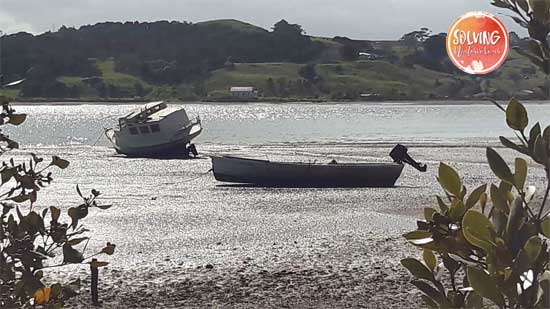
Although the final painting was actually completed in the studio, I also did some tonal Plein Air studies on location. A tonal study is a monochromatic painting, or pencil sketch that is done to help understand just the light and dark values. I was also trying to get a feel for the structure and perspective of the boats.
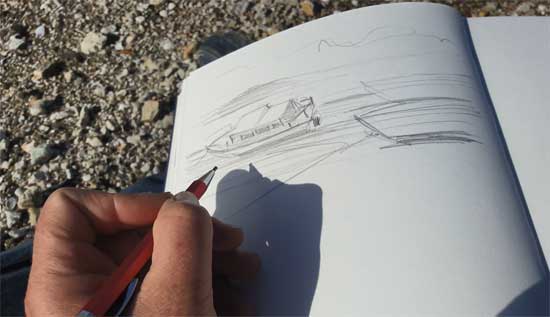
This painting of a couple of boats anchored on the Kaipara Harbor in New Zealand, shows how it’s possible to portray a convincing looking boat with only a few brush strokes and a couple of tonal values.
Total Time: 45 minutes
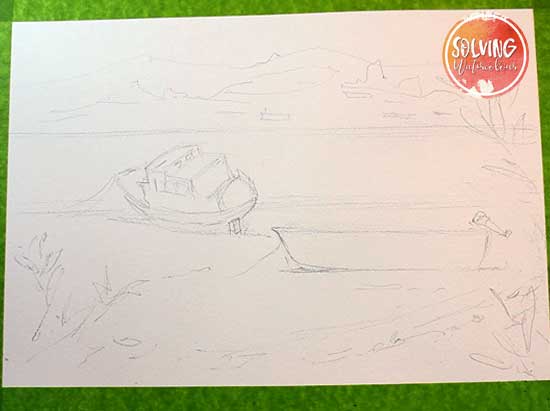
My initial sketch, is quite rough, as you can see but there is just enough detail to show the structure of the boats. The rowing boat in the foreground is just a few simple lines but the little cabin cruiser at the water’s edge has a deceptively complex shape and took a bit longer to get right as it is positioned in such a way that makes it necessary to add perspective.
When drawing three dimensional objects in perspective I find that it try and visualize them as collection of simple geometrical shapes such as stacked boxed and then I add the finer details after.
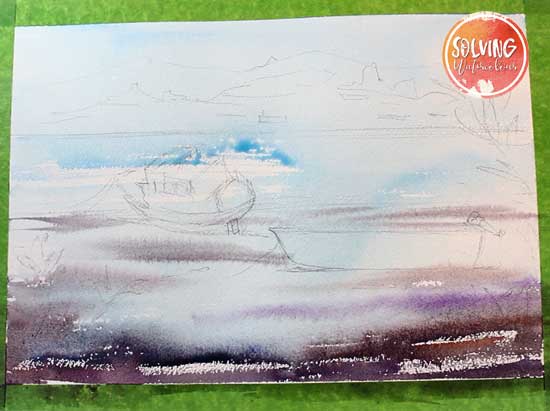
I began by painting the sky and water in simple broad strokes. The painting was set up on my desktop easel angled at about 45 degrees.
For the first wash I used a 1/2 inch Hake brush with Cerulean Blue diluted to a weak tea consistency. I left plenty of white paper showing through especially around the boats. For the dark wet sand and mud in the foreground, I brought the wash down to the bottom of the paper. I picked up some Dioxazine Purple, Payne’s Grey and Burnt Umber and allowed this to mix and blend on the paper.
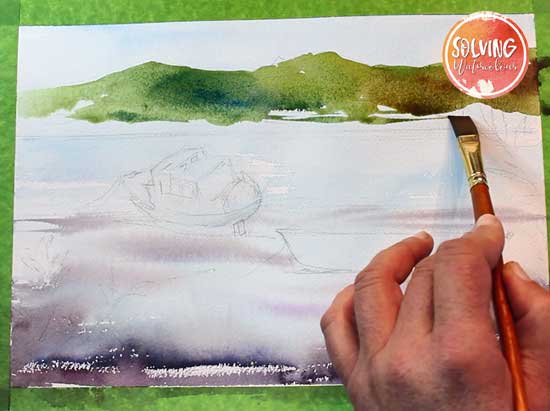
The boats will be the main focus of this painting. They are the elements with the strongest contrast and strong contrasts tend to draw the eye immediately. To keep things simple and uncluttered, I’m going to keep the background elements quite loose and undetailed.
With a 1/4 inch Flat brush I painted a variegated wash of Greens mixed from New Gamboge and Prussian Blue and Burnt Umber.
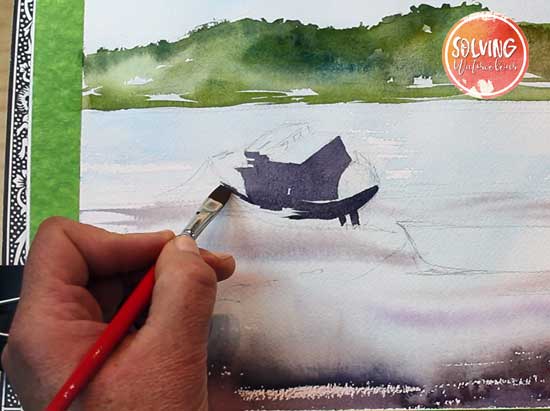
A flat brush is perfect for creating the sharp straight edges needed for the clean lines of the boats. Begin by blocking in just the boat’s shadows, with a 1/4 inch flat brush. I used a strong gray-violet which was mixed from Payne’s Gray, Ultramarine and Alizarin Crimson.
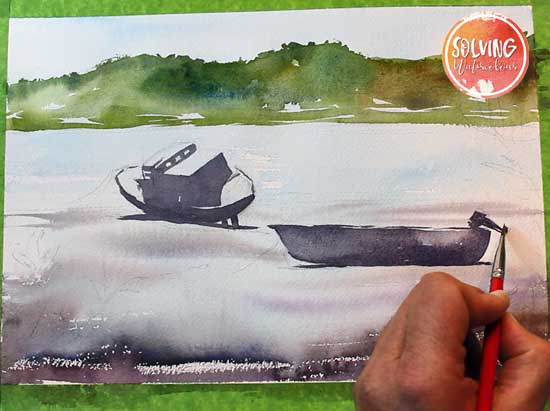
I gave the foreground rowing boat a little more detail and tonal variation than the cabin cruiser, as it is closer to the viewer. Here I am adding the finishing touches to the outboard motor. Don’t forget to indicate the cast shadows on the sand as this little detail will really serve to make the boats feel solid and well grounded in the scene.
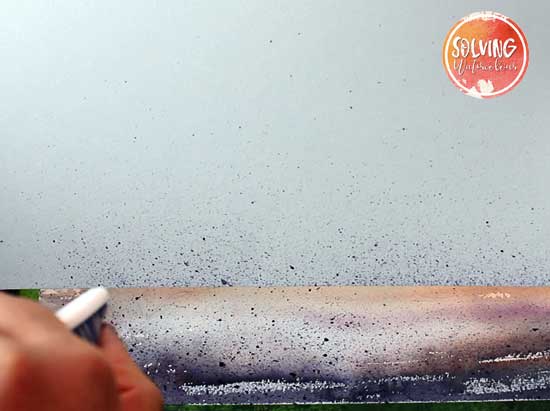
Add the texture of sand and stones by flicking paint with an old toothbrush. I’ve used a sheet of paper as a mask to ensure that the paint doesn’t go into other areas of the painting. Ensure that the paper is at least an inch above your painting, otherwise it will create an unnaturally straight line of spatter.
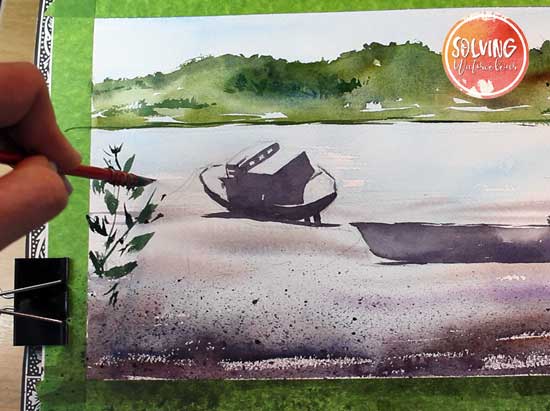
Use a small mop brush to paint the leaves and foliage in the foreground. A mop brush is perfect for creating leaf shapes. It also forms a sharp point, which is ideal for thin branches.
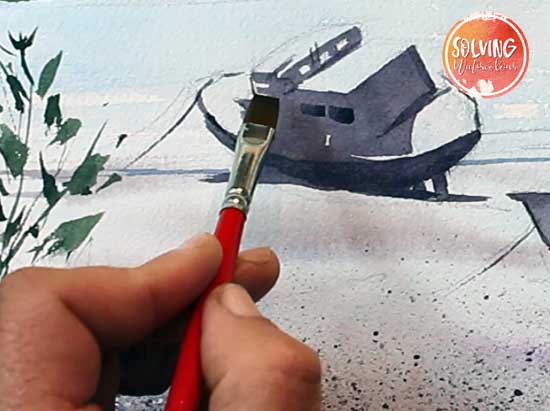
With 95% of the painting completed, all that’s necessary now is to add the darkest details such as the anchor lines and other small lines (often referred to as calligraphy) with a Rigger. Here I am adding the windows to the cabin cruiser with the edge of a flat brush.

If you found this post useful check out the links below
How To Start Watercolor Painting: Essential Beginners Guide
6 Easy Beginner Watercolor Painting Ideas You Can Do!
35 Beginner Watercolor Mistakes & How To Fix Them

Black Friday! Get the EVERYTHING Bundle. ALL my courses & Ebooks for only $225 $ 49 See courses here
- PATREON MEMBERSHIP

Watercolor painting of boats and mist
Watercolor painting – rising mist, san diego harbor.
This is a watercolor painting demonstration based on a photograph my wife took when she was sailing out of San Diego Harbor on her way to Mexico a few years ago. Boats and mist are subjects just made for watercolor (watercolour). It is an ideal medium for paintings with lots of soft light passages and a small amount of detail.

Watercolor painting “Rising Mist” by Joe Cartwright
Reference Photo of Mist, Boats and Sea

Figure 1: Rising Mist, San Diego, Harbor reference photo for watercolor painting demonstration
As you can see there is very little detail in this painting other than a the silhouette of the various boat shapes due to the nature of viewing an object into the light within mist.
My main aim is to capture the atmosphere in this scene which will hopefully strike a chord in others who have experienced mist rising over the water early in the morning.
Note how soft the little boat on the left looks. It is very important for adding the feeling of mist to the scene. The light silhouette of the trees and buildings on the right as well as some of the more distant boats also contribute to this feeling of mist and space.
The soft wet on wet watercolor washes contrast well with the small amount of hard edged wet on dry detail.
Watercolor materials used
Paper: Quarter sheet (37cm x 27cm) of Arches 300gsm Cold Pressed watercolor paper.
Brushes: Watercolor round brushes sizes 24, 16, 12, 8; all with a good point when wet.
Colors: Winsor and Newton artists watercolor paints; Cobalt Blue, French Ultramarine, Cad Orange, Burnt Sienna, Alizarin Crimson, and Cad Red.
Misc: Fine mist spray bottle.
The Drawing
I lowered the horizon line from that in the photo as it was too close to the middle of the page.
In the drawing for this watercolor painting I concentrated on the height and spacing of the masts and made sure the main sail boat in the foreground was reasonably believable as a boat. For the rest of the items in this scene I was more interested in the light and dark shapes that would appear within the painting and how they would aid the feeling of depth and mist I was after.
The two little boats on the left hand side are important as they will be painted very softly to enhance the misty feel of the scene and also help balance the painting.
I used a plastic circle template to draw in the shape of the sun rising above the boats as well as its reflection in the water. Notice I did not draw in any of the main reflections; these would be done after the rest of the painting is completed and will be used to connect the boats and other objects to the water.

Figure 2: Drawing for “Rising Mist” boats watercolor demonstration
Before moving on to the initial under painting stage I erased any sharp lines, especially around the sun shapes, that I did not want to appear in the final painting (Figure 3).

Figure 3: Before starting to paint you watercolor erase most of the lines around the sun shapes so they will not stand out later in the finished painting.
We are now ready to continue to the next stage of our watercolor painting of boats and mist.
Continue to: Watercolor painting under wash of boats, sea and mist
MY PATREON MEMBERSHIP
Subscribe to my Patreon Membership for a small monthly fee. Cancel at any time.
PAPERBACKS AND EBOOKS

Available on Amazon

Follow me on Facebook
By clicking submit, you agree to share your email address with the site owner and Mailchimp to receive marketing, updates, and other emails from the site owner. Use the unsubscribe link in those emails to opt out at any time.

How To Paint A Sailboat: A Complete Guide

Last Updated by
Daniel Wade
June 15, 2022
Whether you’re new to owning a sailboat or not, you have likely put some thought into painting your boat yourself. It is important to keep your boat well painted as it can save you a lot of money in the long run. It can also save you a lot of money if you choose to paint your boat yourself.
Whether or not this is the first time you have painted your boat, you will still find this article useful. It has lots of tips and tricks for making sure you get the job done and get it done well. Hiring a professional may be easier, but there is a sense of pride and accomplishment in doing it yourself. If you use this article as a reference, you can’t go wrong.
Table of contents
Why is it important to paint your sailboat?
Painting your boat is not just an excuse to put some creative flair into your boat, it is an important process in keeping the boat safe. Safe from salt, safe from barnacles, and safe from damage. The paint acts as a vital protective layer, without it your boat will be vulnerable to all kinds of damage. If you have a wooden hull, this protective layer will keep the wood from rotting. It can also plug any minuscule holes that might allow sea life and salt to make its way into the body of the boat.
There is also, of course, the added benefit of having a boat that looks good . A boat is a point of pride and should be treated as such. Having a glossy looking boat is something to be proud of. Most boats are not painted far above the waterline, so it is even an opportunity to make your boat stand out. Some people also believe that painting a boat brings good luck. Unless of course, you paint it green, green is thought to bring bad luck. Whether or not you believe that is up to you.
What are the benefits of painting your boat yourself?
When it comes to painting your boat there are only two options. Hire a professional boat painting contractor, or bite the bullet and do it yourself. They both have their pros and cons, of course, but there is so much more to be gained by doing it yourself. First of all, painting your boat yourself is just as fun as it is difficult. Learning to paint is a valuable life skill that you won’t regret learning as early on in your sailing career as possible. If you can learn to paint your boat now, you will save yourself a small fortune in the long run.
Hiring a contractor is expensive, to say the least, it may be faster and easier overall, but the extra cost can make it simply not feasible. Or simply unappealing. If this is the first time you are painting your sailboat you will need to make a one-off purchase of all the equipment needed for prepping, painting, and finishing the boat. After these one-off purchases are out of the way, you will only need to buy paint and new rollers the next time. Even if you need to buy all the equipment brand new, it can be cheaper than hiring someone else to do the job for you.
How often do you need to paint your sailboat?
The general rule of thumb for painting your boat is that it will need bottom paint about once a year. This is when you will need to take the boat completely out of the water and give it a fresh new coat. If your boat spends all of its time in the water, it certainly needs painting at least once a year. The saltwater is so corrosive that you shouldn’t let your boat go without a fresh coat of bottom paint for more than 2 years. Even if your boat only spends half its time in the water, and the other half on land, you will find that its best to keep its coat topped up.
The top paint, or the above waterline paint, doesn’t need painting anywhere near as often. It isn’t in direct contact with the seawater so it simply isn’t going to get eroded down as much. The salty sea spray can still be damaging over time so this paint should be re-done every 3 years. It can be more or less frequent depending on use and personal preference. Some people like to do above waterline paint yearly, with the rest of their boat, but it isn’t necessary.
What are the best paints to use for your sailboat?
There are plenty of great brands of paint out there, in various colors and shades, so you won’t struggle for choice. There are some things you might want to look for in your paint . For example, you may have noticed that a lot of boats tend to have red hulls. This isn’t just a fashion statement, and while red is supposed to bring luck this isn’t the main reason either. The reason is that this red/orange paint is perfect for added protection along the bottom of your boat.
This red/orange paint is interestingly chosen because it is, of course, traditional; but mostly because of its copper. The copper is actually what gives the paint its red/orange color.
Copper is perfect for the bottom of your boat for several reasons. First, copper acts as a biocide. It stops worms from making their way into the hull if your boat is wooden. If it is metal or fiberglass, it still has the benefit of stopping barnacles and other sea life from attaching themselves deep into the hull of the boat. Copper is also strong enough to hold up to scraping.
Scraping is when you scrape barnacles and other sea life off the hull of your boat. Scraping is an important part of keeping your boat in good condition. It is important to check with the marina or port authority whether or not you are allowed to scrape. If you scrape without permission you may find yourself on the receiving end of a hefty fine. The reason is that they don’t want you introducing invasive species on to the marina floor. This is mostly a problem when you are coming from somewhere vastly foreign, not sailing from New York to Chicago for example.
How many coats of paint does a sailboat need?
When painting your boat it’s a good idea to think about how many coats of paint you are going to need. There is no exact number that is needed, it is mostly to do with how well protected your boat needs to be and how much time you have on your hands. Every coat takes time and attention to detail.
If you choose to do four coats of paint it is going to be time-consuming but very well protected. That being said, the minimum number of coats is two. One is not enough. If your boat only spends part of the time in the water, two to three coats are plenty.
If you are someone who lives on their boat full-time, or at least most of the time, you may want to do more coats. Three, maybe even four, might be ideal here. The reason is that first, your boat is going to experience way more wear and tear than one that is just an ocean part-timer. And second, taking out your boat (which is also your home) is a giant hassle. It is a tedious process, so doing it as infrequently as possible is probably in your best interest. More coats last longer. When you are sailing from place to place, finding somewhere to take your boat out of the water and perform this maintenance is inconvenient. You want to be doing it as little as possible.
What safety precautions do I need to take when painting my sailboat?
All paint can be toxic when inhaled. Even if it is “non-toxic” paint it is going to be harmful to your lungs. They aren’t meant to inhale anything but air, even non-toxic paint is going to be bad for them. This is why it is important to wear a face mask.
Your mask should be specifically for painting, not surgical masks or other cheap medial masks. They are not going to be strong enough, with a fine enough air filter. Whether you feel the need to wear eyewear is up to you during the painting process.
Before the painting begins, when you are scraping and sanding, it is a good idea to wear some goggles to keep debris and splinters out of your eyes. It is also a good idea to wear gloves. You don’t want to rough your hands up too much, they need protection from not only the paint but splinters and sharp pieces of metal.
Painting a boat can be dangerous work. Without taking the proper safety precautions you are putting yourself at unnecessary risk. This safety equipment costs just a few bucks and is equally important as any of the other tools needed to paint your boat.
What tools do I need to paint a boat?
There is more to painting your boat than just using paint and a brush . You will also need tough sandpaper , potentially an angle grinder or welder , paint, primer , brushes, paint rollers , paint thinner , and solvent. You will need to make sure you have all of these things before you start painting. You can pick any of these items up at a boating goods store.
It is a good idea to bring some buckets with you for filling with water, both for rinsing off your boat and your brushes. All of your safety equipment needs to be brought too.
If this is your first time painting your boat yourself, you may find you need to buy all of these things at once. That can be a lot to stomach when its all in one go, luckily, most of these tools and equipment can be reused. Besides, it is still going to be far cheaper than hiring someone to do it for you. All of this equipment is an investment in your boat.
How to paint a sailboat
Whether this is the first time you have painted your boat or not, you may find some of the tips in this next section useful. Painting your sailboat may be tricky at first, but over time you will get the hang of it. The problem with painting your boat is that it can be a very expensive mistake if you get it wrong.
It is important to read this guide carefully, take your time, and make sure you do the job properly. It may be slow going at first, speed will come over time. Once you have gathered all of your safety equipment and tools you are ready to get started.
The workspace
First of all, you need to ensure you have the right workspace. You cant paint your boat in the water so you are going to need to find somewhere to do your work. This is easy enough if you don’t live on your boat full time, take the boat to your house and do your painting on the driveway. If this isn’t an option because you don’t have space or live on your boat full time, you are going to need to rent somewhere. There are typically places affiliated with the marina that you can use. In some cases, these even come with a majority of the equipment you will need. This, of course, drums up the price a bit, but that’s unavoidable.
Your workspace needs to be well ventilated, or you risk making yourself very sick. Both from paint fumes, rubbing alcohol fumes, and fine matter from when you sand the hull down. This means painting your boat in your garage, if it even fits, is not always the best idea. If you do decide to paint outside, it is important to consider the chance of rain. Of course, your boat is pretty waterproof, but once you begin sanding rain might damage the wood if left to sit there.
Before you do anything else, it is important to look your boat over fully from top to bottom. You are looking for any bumps, scrapes, cracks and general damage. This damage is not going to be noticeable while the boat is in the water, so just before you paint it is one of the only times you get to have a close look. Once you have made note of all this damage, it is time to get to work repairing it. Depending on just how severe this damage is, you may want to get help with this next stage.
All of this damage needs to be repaired before anything else can take place. Painting over these damaged areas is just going to hide the problem temporarily, the next time it comes to painting you will find they are far worse. If you don’t deal with this now, they are going to snowball into complicated and expensive repairs.
After your repairs are done it is time to start sanding. This is very time consuming as you need to do it three times. Per coat. First, take the 600 grit sandpaper and make your way around the boat. It is best to use electrical tape to mark out a section at a time so you don’t keep losing your place. After you have finished with the 600 grit sandpaper, it is time to move on to 800, then 1200. This process is important so you will be painting on as smooth a surface as possible. It is then a good idea to wipe the surfaces of the boat down with a damp cloth to remove any of the dust and flakes of metal/wood. Otherwise, you end up painting over them.
You could wash the boat down with a hose but you want to avoid getting the boat unnecessarily wet now that the hull has lost its protective layer. If you are sanding down a boat with a copper paint bottom, you may find the sanding process difficult. Just do your best, it doesn’t need to be 100% perfect. It is important to get as much of the old paint off as possible. Your new paint won’t adhere to the old paint as well as it would to the boat hull itself.
Putting on a layer of primer is not 100% necessary but it is recommended. The idea is that you want your topcoat to adhere to the boat as well as possible, a layer of primer can help you do that. The primer needs to be painted on evenly all over the boat. If you only feel like doing below the waterline, that is fine too. It will save you a lot of time. Putting on the layer of primer is not the most time-consuming part, it is mostly the sanding down that you will have to do. You will need to sand down using the 600 grit paper, then the 800, then 1200. Just like last time. Your layer of primer needs to be as smooth as possible for the maximum adhesion.
Now comes the paint. It is recommended to do at least two layers of paint. One undercoat and one top. Some people choose to go as far as two layers of primer, two layers of undercoat, and three layers of topcoat. This is going to be very time consuming, remember you will need to sand down three times between each layer of paint. You can paint using a brush if you like but is far easier to use a roller. It is also far easier if you employ someone to help you with this stage. It could be your spouse, child, friend, or anyone. It doesn’t need to be a paid professional. It can take a long time to go through this process. Especially if you are effectively doing 8 layers of paint (including primer).
The fastest way to paint, especially if you are on your own, is to use a sprayer. They are easy to use, with a little practice. If you haven’t used one before you may find that you struggle to get an even coat. You should always paint in vertical stripes, not horizontal. Additionally, it is a good idea to have someone following after you with a small brush doing small touch-up jobs. Any unevenness will need to be sanded down and repainted. The whole painting process can take a week if you aren’t efficient.
Take pictures
It is a good idea to take pictures throughout the whole process. This is for future reference. For example, if you take pictures of the boat when you are assessing it for damage, you can compare them to after you have repaired or sanded the trouble spots down. If you cant see the trouble spots still, great! If you can, it will help you keep an eye on them after you have painted too. It’s a good idea to catalog all of these areas if they start to become regular problems you may want to have your boat looked at by a mechanic. You might also like to have a before and after picture for your blog, or just as a personal memento.
Hopefully, you now have all the theory needed to paint your boat. There is a lot more that goes into painting your boat than simply grabbing some paint and a brush. It takes planning, practice, and attention to detail. If you follow this guide you will have no trouble at all. If this is your first time painting your boat, don’t be disheartened if it takes a lot longer than you expected. Speed will come with time, it is far more important to get the job done right than get it done quickly. If you put the work in you will be painting like a pro in no time at all.
Related Articles
I've personally had thousands of questions about sailing and sailboats over the years. As I learn and experience sailing, and the community, I share the answers that work and make sense to me, here on Life of Sailing.
by this author
Repairs and Maintenance
Most Recent

What Does "Sailing By The Lee" Mean?
October 3, 2023

The Best Sailing Schools And Programs: Reviews & Ratings
September 26, 2023
Important Legal Info
Lifeofsailing.com is a participant in the Amazon Services LLC Associates Program, an affiliate advertising program designed to provide a means for sites to earn advertising fees by advertising and linking to Amazon. This site also participates in other affiliate programs and is compensated for referring traffic and business to these companies.
Similar Posts

How To Choose The Right Sailing Instructor
August 16, 2023

Cost To Sail Around The World
May 16, 2023

Small Sailboat Sizes: A Complete Guide
October 30, 2022
Popular Posts

Best Liveaboard Catamaran Sailboats
December 28, 2023

Can a Novice Sail Around the World?
Elizabeth O'Malley


4 Best Electric Outboard Motors

How Long Did It Take The Vikings To Sail To England?

10 Best Sailboat Brands (And Why)
December 20, 2023

7 Best Places To Liveaboard A Sailboat
Get the best sailing content.
Top Rated Posts
Lifeofsailing.com is a participant in the Amazon Services LLC Associates Program, an affiliate advertising program designed to provide a means for sites to earn advertising fees by advertising and linking to Amazon. This site also participates in other affiliate programs and is compensated for referring traffic and business to these companies. (866) 342-SAIL
© 2024 Life of Sailing Email: [email protected] Address: 11816 Inwood Rd #3024 Dallas, TX 75244 Disclaimer Privacy Policy

- Leonardo Da Vinci
- Amedeo Modigliani
- Edgar Degas
- Paul Cezanne
- Edward Hopper
- Johannes Vermeer
- Edouard Manet
- Rembrandt van Rijn

- Classic 20"x24"
- Square 24"x24"
- Small 8"x10"
- Oversize Paintings 36"x48"
- Large 24"x36"
- Extra Large 30"x40"
- Customary 16"x20"
- Miniature Pre-Framed Art
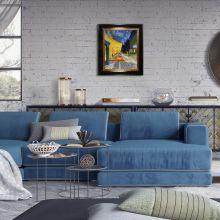
- Living Room Art
- Bedroom Art
- Dining Room Art
- Traditional Office
- Modern Office
- Family Room Art
- Lobby & Waiting Room
- Kitchen Art

- American Art
- Famous Cities
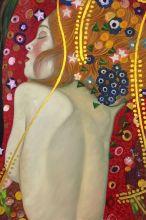
- Coastal Living

- Post-Impressionism
- Impressionism
- Expressionism
- Neoclassicism
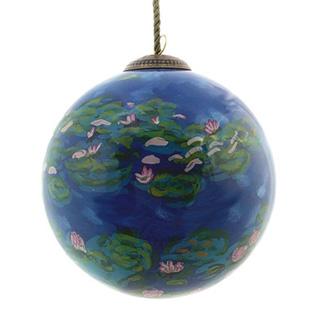
- Oil Paintings
- Canvas Prints
- Coconut Bowls
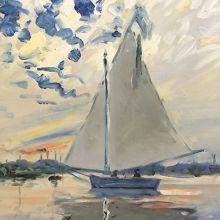
- Gifts for Wife
- Gifts for Husband
- Gifts for Newlyweds
- Gifts for Son
- Gifts for Grandma
- Gifts for Grandpa
- Gifts for Sister
- Gifts for Friends
- Gifts for Daughter
- Best Sellers
- New Arrivals
- Canada Shipments can be shipped via 'FedEx Ground Shipping' so they will arrive in 3-6 days!
- FedEx International Economy
- FedEx International Priority
Harbor Scenes & Boat Oil Paintings
Browse famous paintings by artists Claude Monet , Winslow Homer , William Bradford , Vincent Van Gogh and Edward Hopper . Our sailboat paintings include scenes from New England to tropical islands. Depending on the mood you want to set, choose a painting that contains darker, more ominous colors for a New England, stormy feel, or transform a boring room into an upbeat tiki scene with bright colors and beautiful boats.
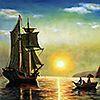
Classic 20" X 24" $189.00
Oversized 36" X 48" $339.00
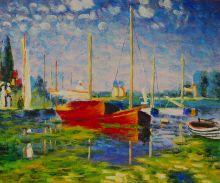
Classic 20" X 24" $179.00
Oversized 36" X 48" $369.00

Small 8" X 10" $99.00
Classic 20" X 24" $199.00
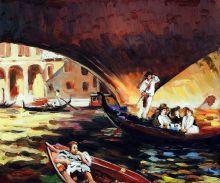
Small 8" X 10" $39.00
Customary 16" X 20" $69.00
Classic 20" X 24" $99.00
Square 24" X 24" $119.00
Large 24" X 36" $149.00
Extra Large 30" X 40" $179.00
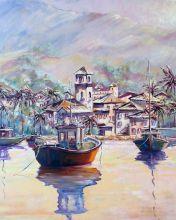
Beautiful Boat Scenes These paintings of boats have been created to meticulously reflect their originals. Hang them in your home, your beach house or lake cottage and enhance their ambiance. Order recreations of famous paintings like Red Boats at Argenteuil , Boats at St. Marie's and A Sunset Calm In the Bay of Fundy .
HAPPY ART CUSTOMERS
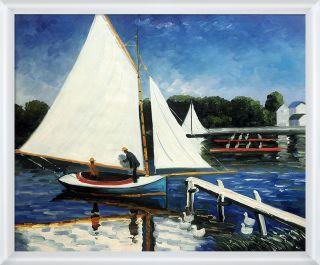
save 20% instantly and never miss a deal
Order toll free.
- Artcorner blog
- artistbe.com
Business & trade
- Restaurant art
- Interior decorators
- Business art
- Shop gift cards
CUSTOMER SERVICE
- Returns & Exchanges
- Decor assistance
- Shop via Catalog
- Shop Lookbooks
- Testimonials
- MY Gift Cards
- Order History
Get 6 Months to pay on $99 or more
Check out with PayPal and choose Bill Me Later
Subject to credit approval. US customers only.
- Privacy Policy
- Terms and Conditions
Disclaimer: www.overstockart.com is not affiliated in any way whatsoever with Overstock.com, Inc. or with www.overstock.com
Your feedback is very important for overstockArt.com, so we could be even better.
THE 10 BEST Moscow Boat Rides & Cruises
Boat rides & cruises in moscow.
- Boat Rentals
- Scuba & Snorkeling
- Fishing Charters & Tours
- Water Sports
- Stand-Up Paddleboarding
- Surfing, Windsurfing & Kitesurfing
- Kayaking & Canoeing
- Waterskiing & Jetskiing
- Parasailing & Paragliding
- River Rafting & Tubing
- Dolphin & Whale Watching
- Speed Boats Tours
- Submarine Tours
- 5.0 of 5 bubbles
- 4.0 of 5 bubbles & up
- 3.0 of 5 bubbles & up
- 2.0 of 5 bubbles & up
- 3rd Transport Ring (TTK)
- District Central (TsAO)
- Garden Ring
- District Northern (SAO)
- Good for Big Groups
- Good for Couples
- Good for a Rainy Day
- Budget-friendly
- Good for Kids
- Hidden Gems
- Honeymoon spot
- Good for Adrenaline Seekers
- Adventurous
- Things to do ranked using Tripadvisor data including reviews, ratings, photos, and popularity.
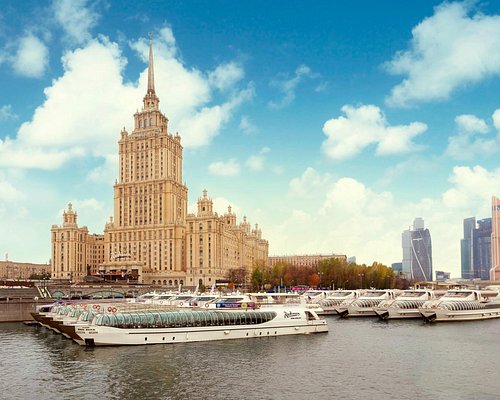
1. Flotilla Radisson Royal

2. Moscow River Boat Tours

3. Sup-Club

4. Akvanavt Diving Centre

5. Diving Center Crocus City Oceanarium

6. CheapRussia Tours
7. Kite School Kiteclass

8. SUP Center
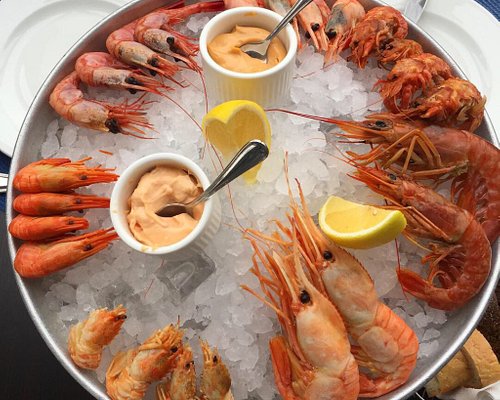
9. Erwin. Reka
11. Easy Russia Tour Guide
12. Lovely Russia Tours

13. Capital River Boat Tours - Moscow Centre

14. Alfa Centr
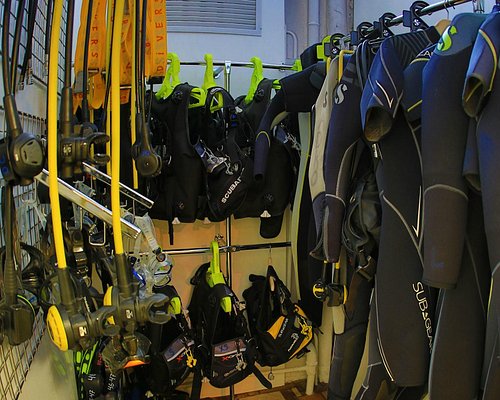
15. Diving Club Divers

16. Sup Outdoor

17. MORE MOSCOW
19. Soho Sailing Style
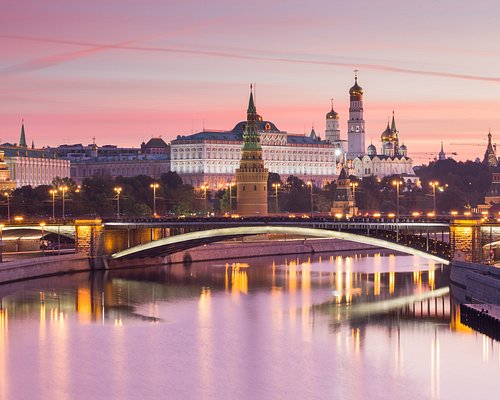
20. Mosparokhodstvo
21. Diving Center Crocodile

22. Dive-Project

24. Kosinskiy Children Marine Club

25. Kayak Moscow
26. DIVECLUB CHE

27. FLOW Moscow

28. Moswake

29. Morskiye Volki

30. S-cruises
What travelers are saying

- CheapRussia Tours
- Easy Russia Tour Guide
- Lovely Russia Tours
- MORE MOSCOW
- Insider Moscow Tours
- Flotilla Radisson Royal
- Moscow River Boat Tours
- Capital River Boat Tours - Moscow Centre
- Diving Center Crocus City Oceanarium
- ALL MOSCOW TOURS
- Getting Russian Visa
- Top 10 Reasons To Go
- Things To Do In Moscow
- Sheremetyevo Airport
- Domodedovo Airport
- Vnukovo Airport
- Airports Transfer
- Layover in Moscow
- Best Moscow Hotels
- Best Moscow Hostels
- Art in Moscow
- Moscow Theatres
- Moscow Parks
- Free Attractions
- Walking Routes
- Sports in Moscow
- Shopping in Moscow
- The Moscow Metro
- Moscow Public Transport
- Taxi in Moscow
- Driving in Moscow
- Moscow Maps & Traffic
- Facts about Moscow – City Factsheet
- Expat Communities
- Groceries in Moscow
- Healthcare in Moscow
- Blogs about Moscow
- Flat Rentals
Art in Moscow: Museums, Galleries and Museum-Reserves
There is no strict dress code in Moscow museums. However, if you are going to explore ancient churches and holy places we recommend more conservative outwear. Women should have their heads covered.
All state museums and galleries are free every third Sunday of the month. Some of the Moscow museums are free on holidays, and during the «Museum days» and «Museum Night».
If you’re looking for great cultural tours around art points of Moscow, we have a great MOSCOW ART & DESIGN TOUR , available for you everyday except Mondays.
Moscow Museums
The Moscow Kremlin

Don’t miss a chance to see the very heart of Moscow, the Kremlin, the symbol of the Russian State, one of the greatest architectural ensembles in the world, a treasury of unusual relics and monuments of art. It is situated on a high Borovitskiy hill above the Moskva River, so you’ll be able to see a spectacular view of the city center. The famous Armory Chamber and the Diamond Fund are real treasure-houses, where you can see ancient Russian regalia, ceremonial tsar’s dress, church hierarchs’ vestments, arms, gold and silverware by Russian, European and Eastern masters. The Kremlin is the official President’s residence and remains a gorgeous political landmark. The UNESCO has included the ensemble of the Moscow Kremlin in the World Heritage List.
Site: http://www.kreml.ru/
The State Historical Museum

Ivan Zabelin, Aleksey Uvarov, and several other Slavophiles founded the State Historical Museum in 1872 to promote Russian history and national self-awareness. During its century-long history, the museum has collected more than 4.5 million of valuable items and over 12 million pages of documental archives. Its exhibitions range from relics of prehistoric tribes that lived in the territory of present-day Russia, through priceless artworks acquired by members of the Romanov dynasty. The museum’s historical building which was reconstructed and equipped to meet all the visitors requirements is on the Red Square.
Site: http://www.shm.ru/
The State Tretyakov Gallery

The State Tretyakov Gallery takes a special place among the national art museums of the world. Established with the efforts of one person, the dedicated collector Pavel Tretyakov, it possesses a unique collection of Russian art, more than 150000 masterpieces, created by famous Russian artists throughout the centuries. The historic building of the State Tretyakov Gallery at Lavrushinski Lane presents Russian art from the 11th through the early 20th century. The state Tretyakov Gallery at Krymsky Val has an excellent collection of Russian art of the 20th century, modern art and holds temporary exhibitions.
Site: http://www.tretyakovgallery.ru/
The Pushkin State Museum of Fine Arts

The Pushkin State Museum of Fine Arts is one the largest European museums of fine art. It has one of the most remarkable collections of fine arts in Russia that consists of artworks from ancient times to the present day. Visitors can see great paintings by world famous artists: Rembrandt, Botticelli, Canaletto, Tiepolo, along with the remarkable collections of Impressionists, Post-impressionists, modernists: Monet, Cezanne, Van Gogh, Picasso and others. Moreover, the museum holds the private collectors’ galleries, many of were inaccessible to public for many years.
Site: http://www.arts-museum.ru/
Moscow Museum of Modern Art
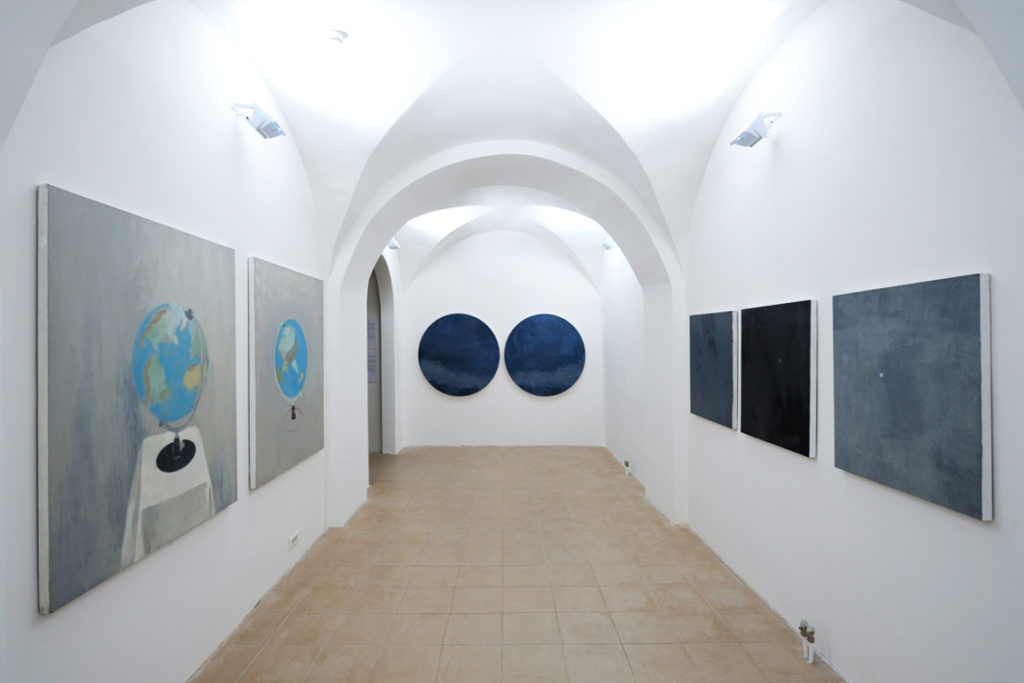
Moscow Museum of Modern Art specializes in the modern art of 20th and 21st centuries. The famous Russian artist and sculptor Zurab Tsereteli has founded it. The museum is located in four historic buildings in Petrovka Street, Gogolevsky Boulevard, Ermolaevsky lane and Tverskoy Boulevard. The museum’s collection depicts the development of avant-garde. The largest part of the collection consists of masterpieces of Russian artists, but you can also find works by Anri Russo, Joan Miro, Pablo Picasso and many others.
Site: http://www.mmoma.ru/
The Moscow Planetarium

The Planetarium in Moscow first opened its doors in 1929. After a global reconstruction, it was reopened in 2011. Now it is a multifunctional complex that combines scientific and educational resources: the interactive museum «Lunarium», the Museum of Urania, the Big Star Hall and the Sky Park, family recreation center, that focuses on different age groups. The Moscow Planetarium is one of the biggest planetariums in the world.
Site: http://www.planetarium-moscow.ru/
Moscow Galleries
Garage museum of contemporary art.

Exhibit on display during the opening of «Art Experiment»
The museum is a kind of independent platform aimed to disclose and reveal a new way of thinking. The Garage Center currently reflects the contemporary innovations of national and world’s culture. It invites you to the beautiful world of modern art, showing its best pieces. This center offers a great number of various exhibitions, educational projects for kids and adults, and publishing. The Garage Center is also called The Museum of Everything. It provides ways and reasons for public dialogue and the creation of progressive ideas.
Site: http://garageccc.com/
The Multimedia Art Museum

Fifty Years of Bond Style Exhibition
The Multimedia Art Museum opened in October 2010 at the base of the Moscow House of Photography. One of the main principles of MAMM s work is complete openness to the new forms of visual expression and for the fresh, innovative trends in the Russian and foreign media art and photography. There are seven floors of spacious exhibition halls and minimalist architecture that is a great font for modern art. The exhibition history of MAMM and Moscow House of Photography counts more than 1300 exhibitions in Russia and abroad. Moreover, Multimedia Art Museum has different educational programs and holds famous Moscow art festivals: Photobiennale, «Fashion and Style in Photography» and others.
Site: http://www.mamm-mdf.ru/
Lumiere Brothers Photography Center

This modern photo gallery is located in the very heart of Moscow, next to the Kremlin, Cathedral of Christ the Savior, big art galleries, design studios famous clubs and restaurants. The photography Center houses in an old and huge mansion at the Moskva River Embankment. Lumiere Brothers Photography Center has three huge exhibition rooms, lecture hall, library with an immense collection of rare books in photography and an independent bookshop. The Center is conducting research work, organizing educational projects, providing a base for the future Russian Museum of Photography.
Site: http://www.lumiere.ru/

Winzavod (Wine Factory) is the first and the biggest Center of Contemporary Art in our country. It unites all the areas of modern culture: exhibitions, festivals, lecture programs, cinema, concerts, theater premieres. You will find here a big amount of art galleries, artists’ workshops, designers and photographers studios, art cafes, fashion showrooms, a bookshop, children’s studio and many other things. The purpose of Winzavod is to support and to develop Russian contemporary art, art initiatives and help talented young people. Visiting Winzavod you will see the art that defines not only today’s but also tomorrow’s life.
Site: http://www.winzavod.ru/

The Manezh was built in 1817 in honor of the 5th anniversary of Russia’s victory in the 1812 war. Then it was called «Exerzierhaus», building, intended for military drills. The building has the unique construction – wooden structure trusses overlap the space of 44.86 square meters without any intermediate supports. After 1917, Manezh served as a garage for government vehicles. And since 1957 it has been continuously used for exhibitions and public events. In 2004, the building was severely damaged by fire. Renovated in 2005 the Manezh doubled its area. Nowadays it is one of the leading Moscow exhibition halls. There are two exhibition spaces, a conference room and a cafe on the third-floor observation deck. The Manezh hosts numerous fairs, festivals, and exhibitions.
Site: http://moscowmanege.ru/
Flacon Design Factory

Flacon Design Factory, located in the territory of a former glass factory, has become a pioneer in the revitalization of industrial zone outside the historic center of Moscow. Flacon has become a powerful launch pad for multiple cool projects, self-expression of creative individuals and carrying-out of sociocultural initiatives. No wonder that the atmosphere at Flacon entirely coincides with its motto: «Create as you please!» The Factory includes offices, co-working zone, shops, workshops, exhibition and creative projects spaces. Lectures, film screenings, fairs, design festivals, innovative exhibitions, presentations, concerts, limited actions and design community work days pass here weekly.
Site: http://flacon.ru/

Artplay is near Winzavod in the former industrial space in the area Kurskaya metro station and occupies an area of 75,000 square meters. Artplay, providing a new life to carefully reconstructed factory buildings, has become an important part of the contemporary cultural landscape of the city. Artplay unites designers, architects, furniture, lighting, ceramics, decorative materials shops, involving them in cooperation with each other. Young Moscow galleries, artists’ studios, cafes, bars, bookstores, music club, school of design, theater, children’s art studio are also situated here. Three exhibition halls regularly host contemporary art exhibitions, festivals, video art, alternative music concerts, performances, film screenings, lectures and master classes.
Site: http://www.artplay.ru/
CCI Fabrika

The Center For Creative Industries «Fabrika» is an art space for non-commercial creative projects. Today it is the example of peaceful coexistence of art business, operating enterprise, production, and workplaces for talented people in Moscow. CCI Fabrika is a member of the international network of non-profit cultural centers – Trans Europe Halls. This project is a typical umbrella-center. It is developing in both ways: creating and exhibiting its cultural projects and offering workspaces for other creative groups. Here you can find art studios and workshops of design, architecture, cinema, theater, cartoon animation and contemporary music studios.
Site: http://www.proektfabrika.ru/
Moscow Museum-Reserves
Tsaritsyno State Museum-Reserve

Tsaritsyno State Museum-Reserve is one of the largest historical, cultural, recreation and touristic complexes. Its total area is more than 700 hectares. It is an excellent combination of nature – marvelous rivers, ponds, streams, forests – and scientifically restored and renovated architectural and landscape monuments. The museum’s collection of historical items, exhibitions, and educational programs will be attractive for both national visitors and foreign tourists.
Site: http://www.tsaritsyno-museum.ru/
Arkhangelskoye Country Estate

Russian cultural monument is a good sublimation of the stunning beauty of a green space and luxurious collection of paintings, sculptures, unique books and pieces arts and crafts. During its long history, the estate was used as a recreation place for emperors, politicians, famous writers and poets. Today it is the finest place to have an enjoyable walk and to see the richest collection Russian art.
Site: http://www.arhangelskoe.su/
Kolomenskoe Museum-Reserve

A unique historic place – Kolomenskoe – is situated in the picturesque surrounding over the Moscow River banks. A magnificent country estate has appeared at the lands full of legends. Archeological discoveries state that the first settlements appeared here in the VIII century. It is an ancient and uniquely formed place. Today this is a unique complex of cultural monuments of high historical value.
Site: http://mgomz.ru/kolomenskoe
Sergiev-Posad City

Sergiev Posad Museum-Reserve
Museum of Sergiev-Posad is a historical and art reserve. It is located within the unique wall of the St. Sergius Trinity Lavra. This ancient monastery gathered its treasures during centuries from the tsars, princes and boyars donations. Moreover, many art and craft items were made at Lavra’s workshops. Now, the collections of Sergiev-Posad Museum-Reserve include rare, ancient icons, Cyrillic alphabet books, medieval manuscripts, visual art items, gold and silver showpieces.
Site: http://www.stsl.ru/
PLAN YOUR TRIP WITH US

Happy to help you with everything, from general plan of your visit to plane tickets or hotel stay. We may also support your Russian Visa request with a letter of invitation if you need so.
SEE OUR TOURS

We host around 60 tours every month in English, Russian, German, Italian, Spanish, Arabic and other languages. All of our tours =>
SAVE THIS LINK

If you only started to think about visiting Moscow, just save our site in your browser’s bookmarks or follow us on Facebook and Instagram to be in touch.
Our Private Tours in Moscow
Moscow art & design private tour, soviet moscow historical & heritage private tour, gastronomic moscow private tour, «day two» moscow private tour, layover in moscow tailor-made private tour, whole day in moscow private tour, all-in-one moscow essential private tour, moscow metro & stalin skyscrapers private tour, tour guide jobs →.
Every year we host more and more private tours in English, Russian and other languages for travelers from all over the world. They need best service, amazing stories and deep history knowledge. If you want to become our guide, please write us.
Contact Info
+7 495 166-72-69
119019 Moscow, Russia, Filippovskiy per. 7, 1
Mon - Sun 10.00 - 18.00

IMAGES
VIDEO
COMMENTS
Learn how to draw and paint a sailboat in the harbor with this easy demonstration using soft pastels. This calm, misty harbor is a perfect scene for beginner...
Here is an easy scene to paint in watercolor - easy boats in a harbour setting with reflections.More paintings athttp://www.timwilmot.com/In this demo I will...
My Etsy Shophttps://www.etsy.com/ca/shop/ScenicArtByJavid?ref=profile_headerInstagram:https://www.instagram.com/javidwatercolorFacebook:https://www.facebook....
Loose watercolor landscape with harbor and boats by Robert Joyner Play with Light and Shadow. Light and shadow add drama and dimension to any painting. In harbor scenes, the interplay of light and shadow can be particularly captivating. Observe the direction of light and its effect on the boats and surrounding structures.
The subject, sailboats docked at harbor, is filled with interesting shapes and patterns. This plays well into Payne's style and is perhaps why he created so many of these paintings. In many cases, the sailboats extend or just meet the top edge of the painting. This goes against standard composition theory, but it works.
Since the sailboat is white, make its reflection quite light as well, wavering your lines for a watery illusion. Vary the colors by adjusting your green/blue mix, adding more Viridian in some areas, more Olive Green in others, etc. Try not to paint too many waves though, as the water in a harbor should be calm.
Boats In Harbor. Join artist Vinita Pappas as she takes you through the process of creating a beautiful, complex painting. This half-sheet size painting is done on Saunders cold-pressed paper and is a multi-step process. Starting with a neutral sky color, made up of cobalt turquoise, cerulean blue, cobalt blue, French ultramarine raw, umber ...
How to Paint Boats In Watercolor: "Boats In The Harbor". Step 1: Initial Sketch. Step 2: Painting The First Wash. Step 3: Painting The Background. Step 4: Painting The Boats. Step 5: Foreground Boat & Cast Shadows. Step 7: Adding Foreground Texture. Step 8: Foreground Foliage. Step 9: Final Details.
Watercolor painting - Rising Mist, San Diego Harbor. This is a watercolor painting demonstration based on a photograph my wife took when she was sailing out of San Diego Harbor on her way to Mexico a few years ago. Boats and mist are subjects just made for watercolor (watercolour).
After you have finished with the 600 grit sandpaper, it is time to move on to 800, then 1200. This process is important so you will be painting on as smooth a surface as possible. It is then a good idea to wipe the surfaces of the boat down with a damp cloth to remove any of the dust and flakes of metal/wood.
We also enjoy heading out with friends on other boats or meeting up with them at various times during the cruise. Friendship Sloop - Southwest Harbor - 8"x10", oil on canvas We see lots of boats on this journey, and I focus on them, taking photos, sketching, and painting, usually with watercolor.
How to paint more interesting sky reflections in water. How to paint loose and simplify the scene. How to paint boats in a harbour scene. This is a watercol...
Harbor Scenes & Boat Oil Paintings . Browse famous paintings by artists Claude Monet, Winslow Homer, ... Depending on the mood you want to set, choose a painting that contains darker, more ominous colors for a New England, stormy feel, or transform a boring room into an upbeat tiki scene with bright colors and beautiful boats.
Check out our sailboats harbor painting selection for the very best in unique or custom, handmade pieces from our oil shops.
A fine impressionist coastal painting with boats in the harbor and a cabbage garden in the. Category Late 19th Century Impressionist Landscape Paintings. Materials. Canvas, Oil. View Full Details. Louis Abel-Truchet. Harbor Scene with Boats. H 22.5 in W 25.75 in D 2.25 in. Harbor Scene.
"Boat Yard, Lifting Fog" oil painting, American realist, old boats in a harbor, 2015 H 27.5 in W 35.25 in Soft Moody Colors Cubist Oil Painting Sailing Boat in Harbor
Large Sailboat Party Oil Painting On Canvas Colorful Sailboats & Harbor Painting Nautical Landscape Painting Bed Room Painting Summer Decor (981) Sale Price $85.12 $ 85.12 $ 113.50 Original Price $113.50 (25% off) FREE shipping Add to Favorites ...
👉 Sketch for this tutorial: https://goo.gl/x31BVX🌷 Supply List for this tutorial: https://goo.gl/eTGjBv🌸 Today we will learn how to paint the landscape wi...
These are the best places for budget-friendly paint & pottery studios in Moscow: Государственный исторический музей (State Historical Museum) Art studio Vozdukh; Na Miussakh Pottery Studio; Mosgonchar; Pottery Studio №1; See more budget-friendly paint & pottery studios in Moscow on Tripadvisor
Explore the scenic and historic attractions of Moscow from the water with the best boat tours and cruises. Enjoy the views of the Kremlin, the Cathedral of Christ the Savior, and the Sparrow Hills on a relaxing or informative boat ride. Or, spice up your trip with some water sports and activities in Moscow. Find out more on Tripadvisor.
Get this FULL SERIES here: https://www.offcenterharbor.com/yt-boat-paint-2204/Get a grip on how to paint a boat — before you head off to the marine paint sto...
Moscow Museum of Modern Art. Moscow Museum of Modern Art. Moscow Museum of Modern Art specializes in the modern art of 20th and 21st centuries. The famous Russian artist and sculptor Zurab Tsereteli has founded it. The museum is located in four historic buildings in Petrovka Street, Gogolevsky Boulevard, Ermolaevsky lane and Tverskoy Boulevard.
Walking tour around Moscow-City.Thanks for watching!MY GEAR THAT I USEMinimalist Handheld SetupiPhone 11 128GB https://amzn.to/3zfqbboMic for Street https://...